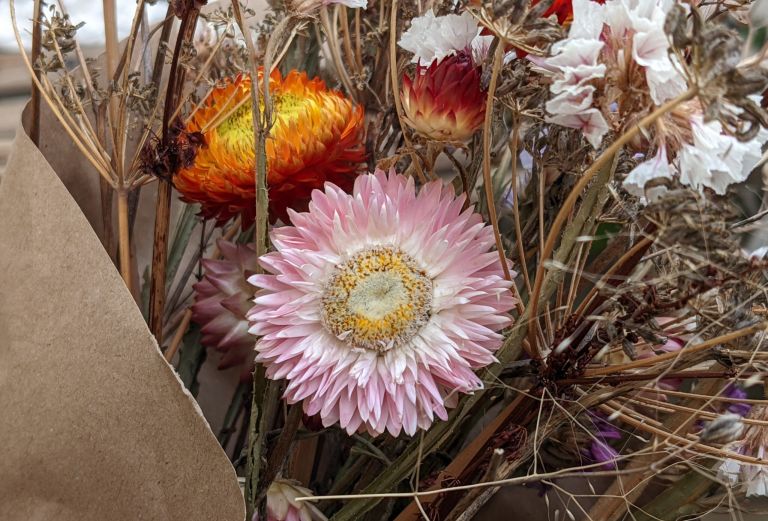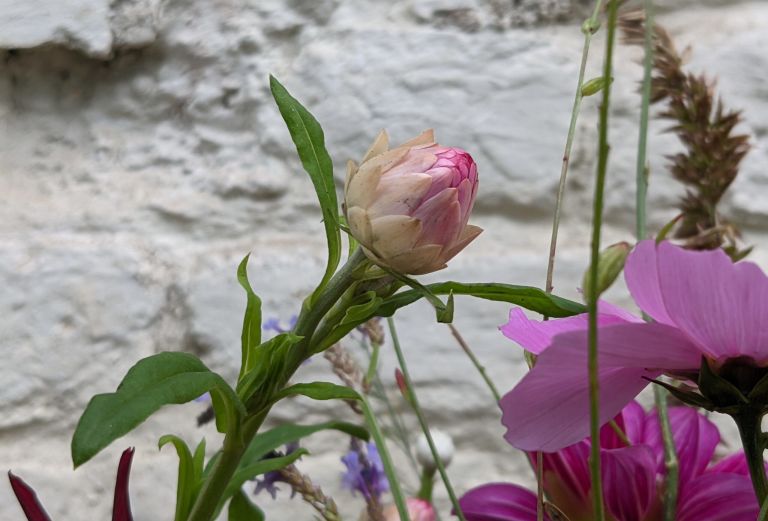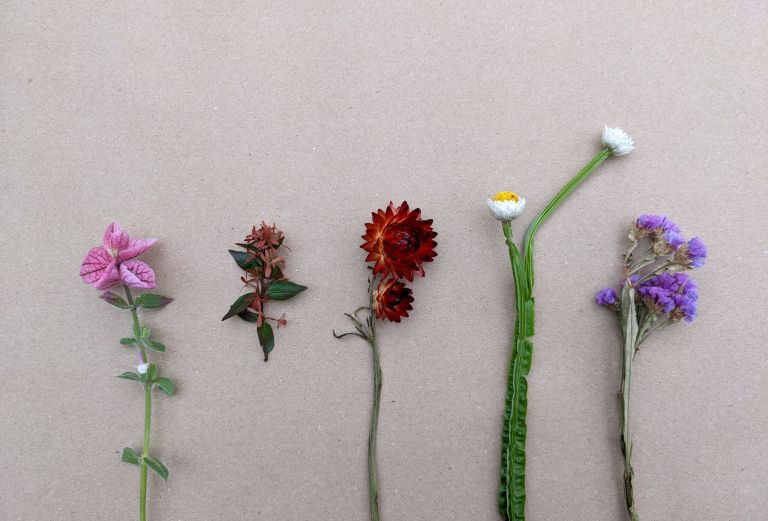
Written by garden apprentice Polina.
My name is Polina and I am one of the garden apprentices who started in September this year at Fulham Palace. Autumn is the time of year we start to collect and process the dried flowers to make bouquets to sell in the museum shop and the walled garden barrow. Working with these beautiful flowers triggered a fascination for me and I wanted to share what I learnt.
So why do some flowers last longer than others or even hold their colour for a longer period without any water? The answer is papery bracts!
According to the Cambridge Dictionary – ‘bract’ – is a type of leaf that grows from the area just below a flower and is sometimes different in shape or colour from the main leaves”.
The most important role of the bract is to be attractive. They are responsible for giving colour to the flower and attracting pollinators such as bees and butterflies, for the process of pollination.
The original word ‘bracts’ from Latin bractea means a thin plate of metal. This definition tells us another function that the bract has – protection. Bracts often protect the buds of the flower and its delicate reproductive system from excessive sunlight, wind or rain. It does this by covering the main flowers, which are usually tiny.
The most demonstrative example of that is the bracts on strawflower – Xerochrysum bracteatum. They close in heavy rain and open when it’s sunny or when the flower is getting dry. Even the botanical name of strawflower refers to bracts. Xerochrysum from the Greek words xeros – ‘dry’, chrysum – ‘golden’, bracteatum comes from Latin ‘bracteatus‘ which means bearing bracts.

Other flowers you can find in the walled garden with papery bracts are:
- Everlasting Daisy – (Ammobium alatum) has small papery white bracts surrounding the golden centres of bright yellow flowers.
- Statice – (Limonium sinuatum) has tiny white flowers on coloured papery bracts.
There are many types of bracts as well as papery ones. Here are some other examples of plants with different bracts in the walled garden:
- Salvia viridis – has leafy larger pink bracts with green veins that appear on the top of the stem above the small white-purple flowers.
- Abelia x grandiflora – has white flowers in bells surrounded by soft dark pink bracts.

Plants with coloured papery bracts can be dried and so are ideal for dried arrangements. To do this you hang them upside down in a dry, airy and dark place.
Most of the plants we have been growing in the walled garden have interesting shapes and forms, which is why we use them for our lovely dry flower bouquets. You can find these for sale on our barrow stall during the autumn and winter months.
We also use these dried flowers on our Christmas wreaths which are sold in the walled garden at the Palace.
Learn more about the long and layered history of London’s second-oldest botanic garden.